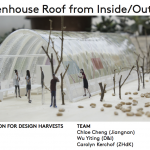Over three and a half billion people, more than half the world’s population, now live in cities. With this accelerating growth of urban areas expected to continue, experts anticipate that by 2030, almost 70% of the world’s population will live in cities.
As cities grow, many rural areas are declining. At the same time, the world is witnessing a decline in the number of famers, in particular the number of young farmers. In Europe for example, young people account for just 6% of the active farming population.
One key implication of these demographic changes is the growing gap between countryside inhabitants and city-dwellers, and a disconnection between consumers and producers, people and food. City-dwellers are eating, but many have little or no idea of where their food comes from or how it reaches the dining table. With connections to food becoming ever more fleeting, it is often difficult to judge food on its quality and sustainability.
Today we can get any type of food all year round, at seemingly convenient prices. However, as Carlo Petrini recently explained in an article published in Italian newspaper La Repubblica, we are often confusing the concept of low price with low cost. Amongst the costs to consider are environmental (in terms of raw materials wasted, large amounts of antibiotics, etc.) and social (livelihoods of farmers, our health, etc.).
Luckily there are now many initiatives and projects, not to mention individuals, working across the globe to reconnect people in cities to agriculture and food. One such initiative is Eating City: a project that looks to open up the debate on a global level, with the eventual aim of raising awareness and changing habits. Eating City attempts to answer many important questions: How do we (re)connect the city with the countryside? How can we reclaim lost flavors? How should we educate people about traditions and gastronomic culture?
Eating City also promotes the budding urban agriculture movement. Every day, more and more citizens are spending a couple of hours working their little piece of land, or any space they can find, to grow their own food. Could the next frontier for agriculture be rooftops, windowsills and balconies?
In Italy alone, 21 million people have an urban-based food garden. In general, these gardens work in harmony with the environment, acting as a source of food for the families cultivating them. Such gardens are also revitalizing plots that would otherwise be abandoned: In Milan for example, 1.1 million square meters of land belonging to the local government body have now been allocated to gardens for domestic use. In Bologna, a cooperative of growers and consumers has been established to cultivate three hectares of land in Borgo Panigale.
Projects like Eating City play a starring role in this new vision, helping citizens and decision makers gain more awareness and knowledge about agriculture. Information, education and creativity are crucial here, giving everybody the chance to bring agriculture to cities across the globe.
Eating City and Urban Agriculture will be discussing this topic and issues at this year’s Salone del Gusto and Terra Madre 2014.







Comments by faculty